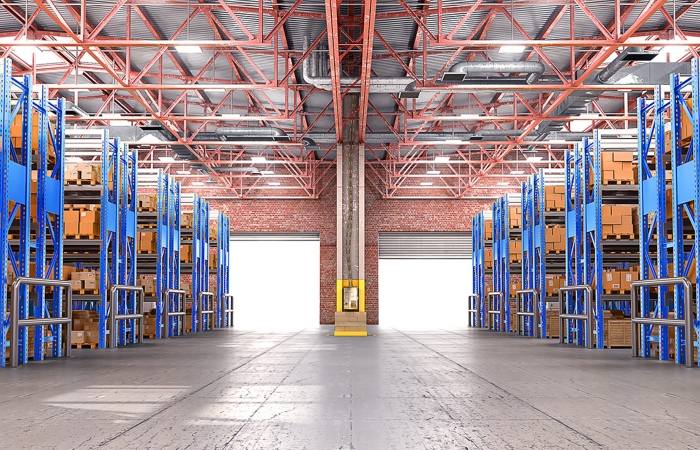
Ahmedabad, a bustling city in the state of Gujarat, India, has emerged as a significant hub for industry and commerce. One of the key pillars supporting this rapid economic growth is the warehousing sector. This article delves into the evolution, current state, and future prospects of warehousing in Ahmedabad, highlighting its crucial role in the region’s logistics and supply chain ecosystem.
Historical Context
Early Beginnings
The history of warehousing in Ahmedabad can be traced back to the early 20th century, when the city was a prominent center for textile manufacturing. Small, rudimentary warehouses were constructed to store raw materials like cotton and finished products such as textiles. These early warehouses were basic structures, often located near manufacturing units for easy access.
Industrial Expansion
The industrial boom post-independence in 1947 saw a diversification in Ahmedabad’s economy. The need for more sophisticated and larger storage facilities grew with the rise of various industries including pharmaceuticals, chemicals, and machinery. Warehouses evolved from simple storage spaces to more organized facilities with better infrastructure and security.
Modern Warehousing: A New Era
Technological Advancements
The 21st century ushered in an era of technological advancements that revolutionized warehousing in Ahmedabad. Modern warehouses are now equipped with state-of-the-art technology, including automated storage and retrieval systems (AS/RS), warehouse management systems (WMS), and advanced material handling equipment. These innovations have significantly improved efficiency, accuracy, and speed in warehousing operations.
Also Read: Navigating the World of Warehousing in Kolkata: A Comprehensive Guide
Strategic Location
Ahmedabad’s strategic location is another factor contributing to its prominence as a warehousing hub. Situated on the crossroads of major national highways and in proximity to the ports of Kandla and Mundra, Ahmedabad serves as an ideal location for distribution centers. This strategic positioning reduces transit times and costs, enhancing the overall efficiency of the supply chain.
Growth of E-commerce
The exponential growth of e-commerce has further boosted the warehousing sector in Ahmedabad. Companies like Amazon, Flipkart, and other e-commerce giants have established large fulfillment centers in the region to cater to the increasing demand for online shopping. These facilities are designed to handle high volumes of orders, ensuring quick and efficient delivery to customers.
Types of Warehouses
General Warehouses
General warehouses in Ahmedabad cater to a wide range of industries, providing storage for various goods including raw materials, finished products, and packaging materials. These warehouses are versatile and can be customized to meet specific storage requirements.
Cold Storage Warehouses
The agricultural sector in Gujarat, known for producing fruits, vegetables, and dairy products, relies heavily on cold storage warehouses. These facilities maintain low temperatures to preserve the quality and extend the shelf life of perishable goods. Ahmedabad’s cold storage capacity has seen significant growth, supporting both domestic consumption and export markets.
Bonded Warehouses
Bonded warehouses in Ahmedabad play a crucial role in international trade. These facilities are used to store imported goods without the immediate payment of customs duties. Goods can be stored in bonded warehouses for an extended period, providing flexibility to importers and exporters in managing their inventories and cash flows.
Challenges in the Warehousing Sector
Infrastructure Development
Despite significant advancements, infrastructure development remains a challenge for the warehousing sector in Ahmedabad. Issues such as inadequate road connectivity, power shortages, and limited availability of land can hinder the growth and efficiency of warehouses. Addressing these challenges requires coordinated efforts between the government and private sector.
Skilled Workforce
The need for a skilled workforce is another critical challenge. As warehousing operations become more technologically advanced, the demand for trained personnel who can operate and maintain sophisticated equipment increases. Investment in training and development programs is essential to bridge this skill gap.
Regulatory Hurdles
Navigating the regulatory landscape can be complex for warehousing businesses. Compliance with various laws and regulations related to storage, safety, and environmental standards is necessary but can be burdensome. Streamlining regulatory processes and providing clear guidelines can help ease the operational difficulties faced by warehouse operators.
Future Prospects
Adoption of Green Warehousing
The future of warehousing in Ahmedabad looks promising with the adoption of green warehousing practices. Sustainable practices such as the use of solar power, energy-efficient lighting, and recycling programs are becoming increasingly popular. Green warehousing not only reduces the environmental impact but also leads to cost savings in the long run.
Expansion of Multi-Modal Logistics Parks
The development of multi-modal logistics parks is another trend shaping the future of warehousing in Ahmedabad. These parks integrate various modes of transport such as road, rail, and air, providing seamless connectivity and reducing transit times. The Gujarat government has been proactive in promoting such projects, which are expected to enhance the overall logistics infrastructure in the region.
Technological Integration
Continuous technological integration will play a pivotal role in the evolution of warehousing. The adoption of advanced technologies such as the Internet of Things (IoT), artificial intelligence (AI), and blockchain can further streamline operations, improve inventory management, and enhance security. Warehouses of the future in Ahmedabad will likely be smart, connected, and highly efficient.
Conclusion
Warehousing in Ahmedabad has come a long way from its humble beginnings. Today, it stands as a critical component of the city’s economic framework, supporting a wide range of industries and facilitating efficient supply chain operations. While challenges remain, the sector’s future is bright, driven by technological advancements, strategic initiatives, and sustainable practices. As Ahmedabad continues to grow as a commercial hub, its warehousing sector will undoubtedly play a vital role in its success.